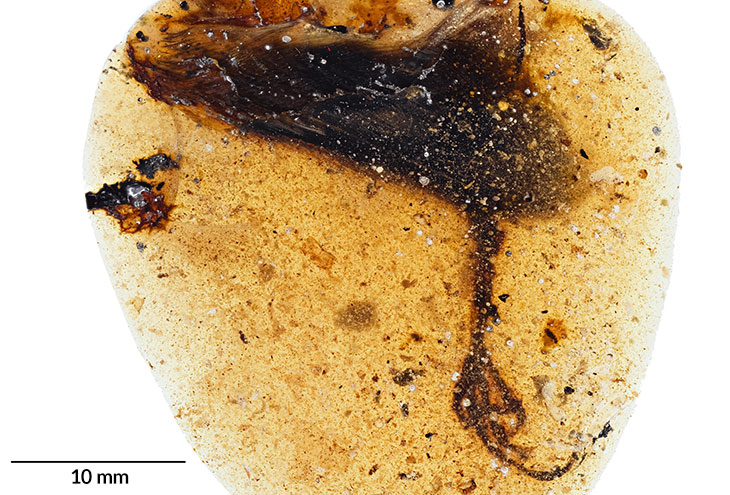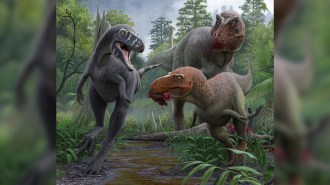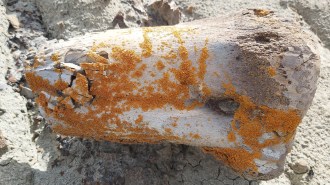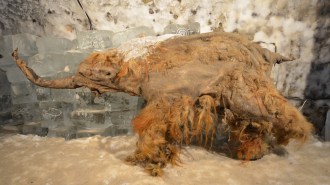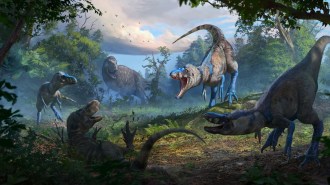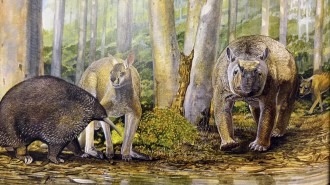An ancient bird found encased in amber had a bizarrely long toe
Extended digits might have helped the critter snag food in hard-to-reach places
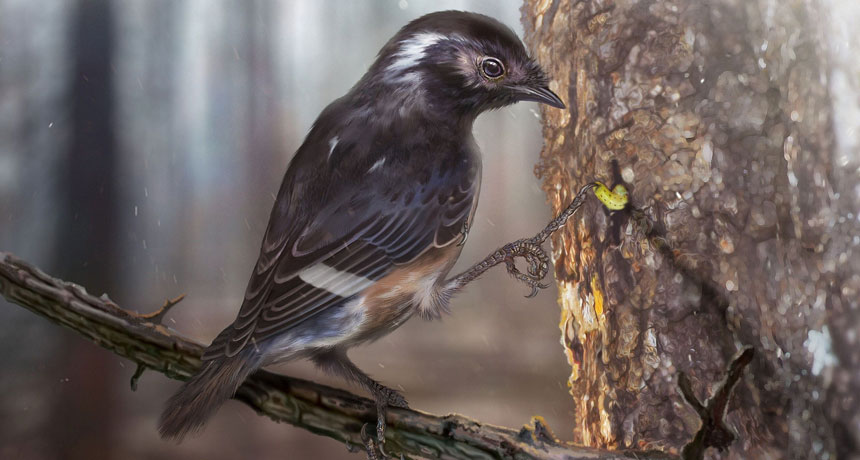
LONGFINGER Elektorornis chenguangi, a newly identified species of bird that lived about 99 million years ago (shown in an artist’s reconstruction), had a bizarrely long third digit on its foot. The extra-long toe may have helped in foraging for food.
Zhongda Zhang/Current Biology
